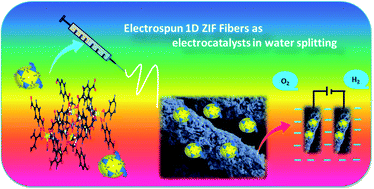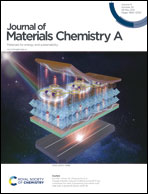Current perspectives on 3D ZIFs incorporated with 1D carbon matrices as fibers via electrospinning processes towards electrocatalytic water splitting: a review
Abstract
Zeolite imidazole frameworks (ZIFs) are a type of material considered as novel in the area of materials chemistry. They are a subtype of molecular organic frameworks (MOFs), consisting of metal ions coordinated with imidazolate linkers. Their unique material properties, such as a highly porous nature and mechanical stability, have extended their utilization to many fields. In addition, one-dimensional (1D) fibrous materials are most habitually synthesised via the highly recommended electrospinning (ES) technique and are utilized for many applications because of their unique physicochemical properties. In this review, the utilization of ZIF-based materials and 1D fibrous materials in the field of electrocatalytic water splitting reactions is discussed, and we also propose new insights into the incorporation of ZIF-based materials into 1D fibrous networks, as well as elaborating on the advantages and challenges associated with this type of incorporation.



 Please wait while we load your content...
Please wait while we load your content...